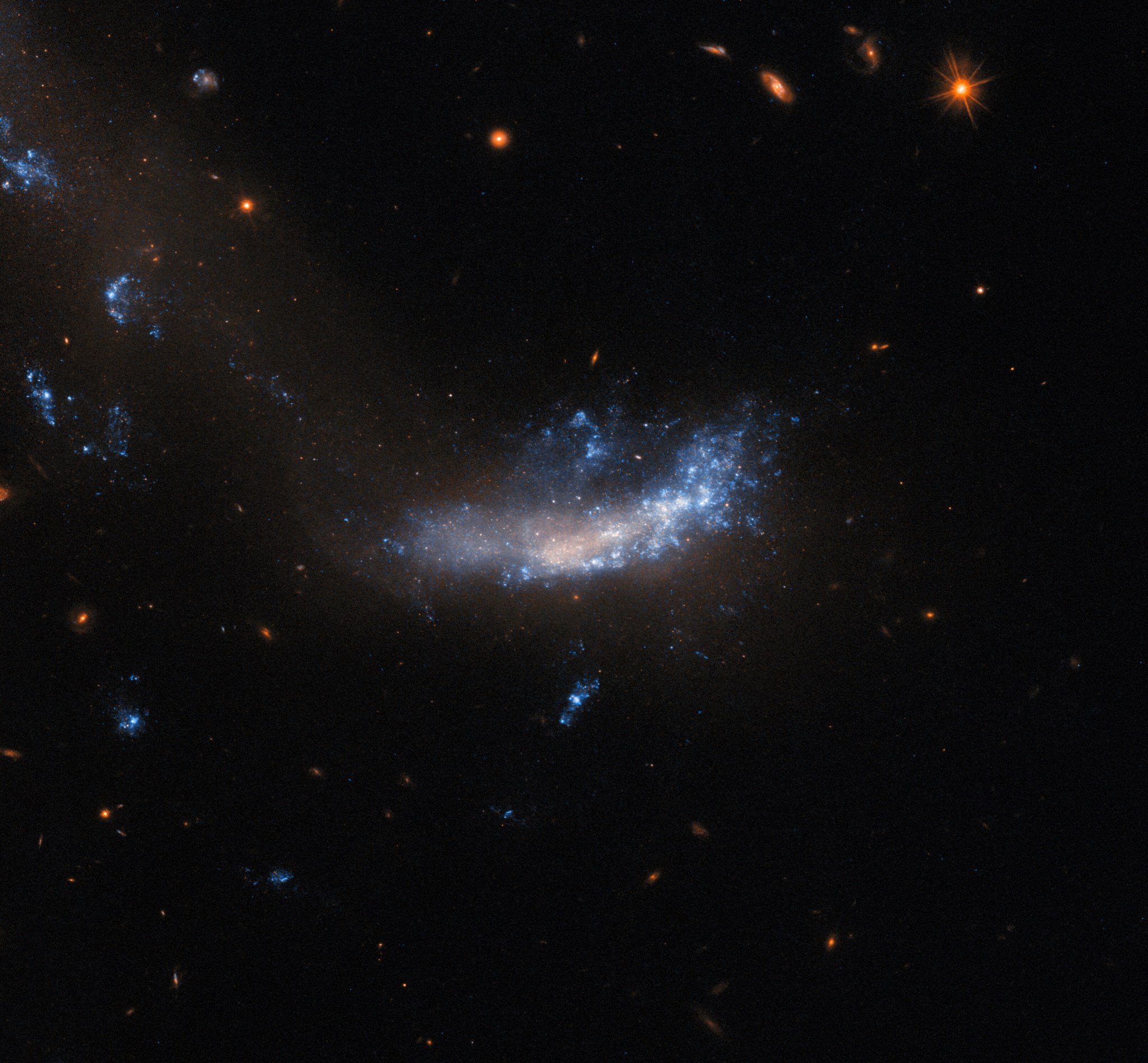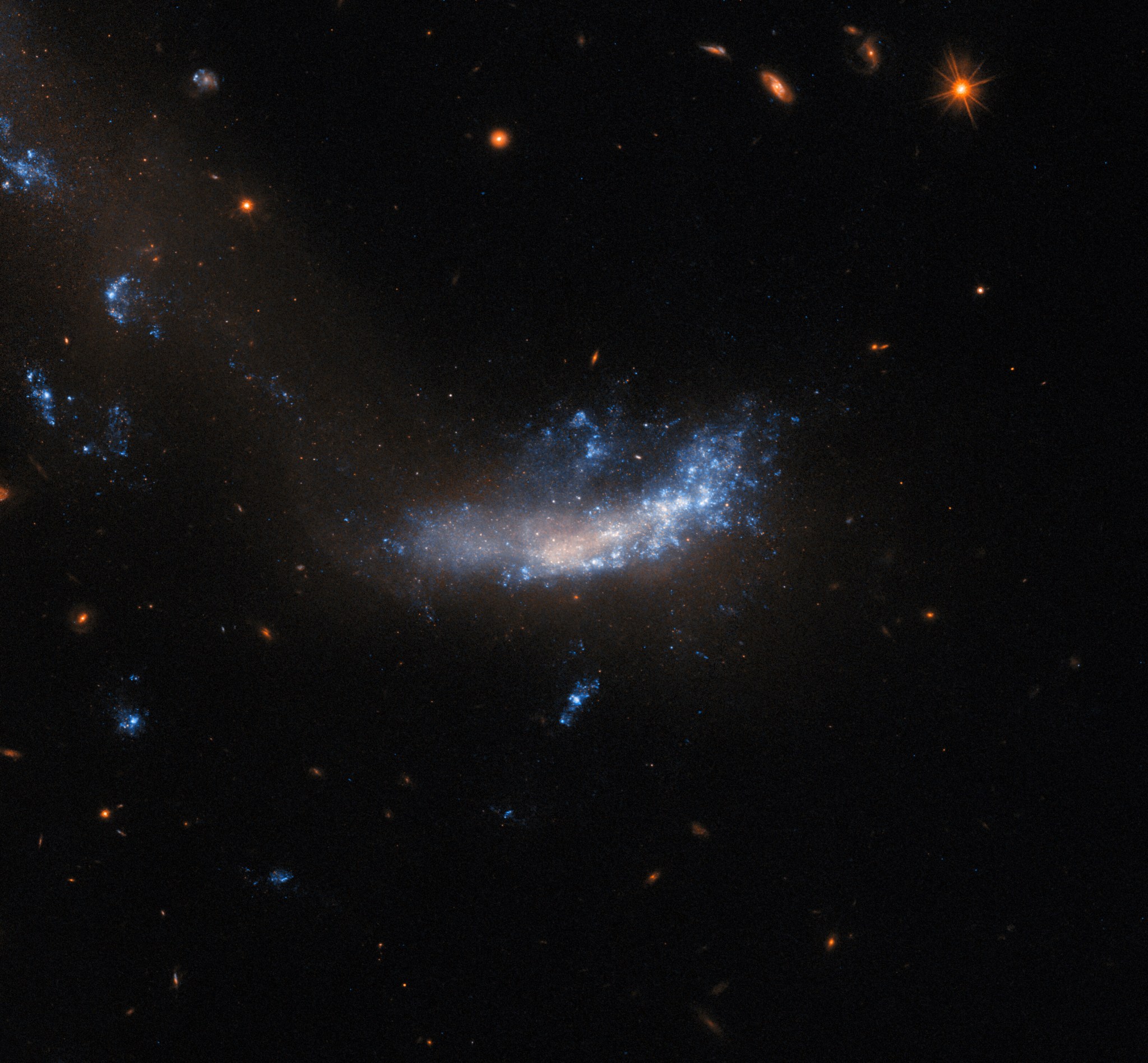2 min read
Hubble Views a Galactic Supernova Site

This image features a relatively small galaxy known as UGC 5189A, which is located about 150 million light-years away in the constellation Leo. This galaxy was observed by the NASA/ESA Hubble Space Telescope to study a supernova explosion in 2010 known as SN 2010jl. This particular supernova is notable because it was an exceptionally luminous supernova event. In fact, over a period of three years, SN 2010jl released at least 2.5 billion times more visible energy than our Sun emitted over the same timeframe across all wavelengths.
Even after supernovae fade to non-observable levels, it is still interesting to study the environments where they occurred. Such studies can provide astronomers with valuable information: supernovae can take place for a variety of reasons and understanding the environments in which they occur helps improve our understanding of the conditions that triggered them. Follow-up studies after supernovae also improve our understanding of the immediate aftermath of such events: from their potent effects on the gas and dust around them, to the stellar remnants they leave behind.
Hubble has observed UGC 5189A many times since 2010. This image is from data collected in three of the latest Hubble studies of UGC 5189A. These studies also examined several other relatively nearby galaxies that recently hosted supernovae – ‘relatively nearby’, in this context, means roughly 100 million light-years away.
Text credit: European Space Agency
Media Contact:
Claire Andreoli
NASA’s Goddard Space Flight Center, Greenbelt, MD
claire.andreoli@nasa.gov







